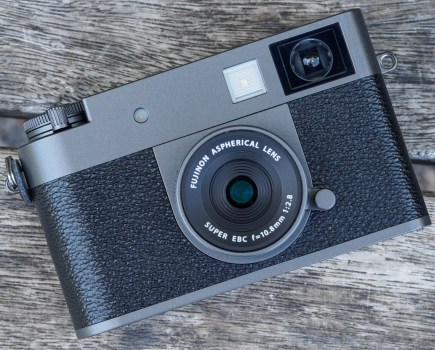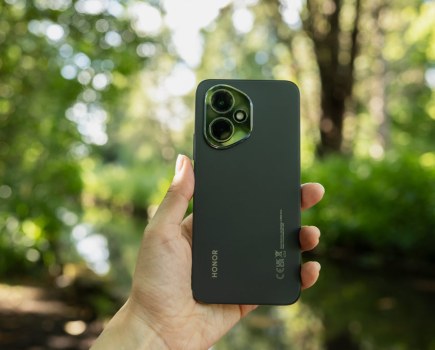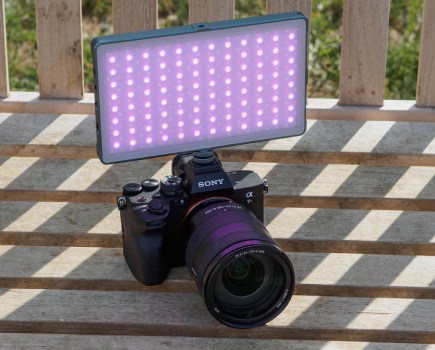Panasonic Lumix DMC-FZ150 at a glance:
- 12.1-million-pixel sensor
- 24x zoom (25-600mm equivalent)
- 3in, 460,000-dot articulated LCD
- 1080p, 50fps video recording
- 12fps frame rate
- Street price around £420
The lumix DMC-FZ150 is Panasonic’s new flagship ‘superzoom’ bridge camera that has a staggering 24x optical zoom. Replacing the DMC-FZ100, the DMC-FZ150’s wide range of use is aimed squarely at the enthusiast photographer desiring a versatile all-in-one camera without the need for a bag full of extra lenses.
As a benchmark model, the DMC-FZ150 sits above the DMC-FZ48. The extras one can expect with the new model include an articulated screen and an impressive specification, with raw image capture and ultra-fast 12 frames per second (fps) recording.
In terms of new features, on the surface it appears that the changes are rather limited. However, in an interesting move by Panasonic there is a drop in resolution. This suggests an over-ambitious imaging sensor last time round. So the question is, has Panasonic had to take a step backwards in order to move the camera’s image quality forwards?
Features
As with most superzoom cameras, a versatile lens is a key selling point. Like its predecessor, the DMC-FZ150 has a Leica DC Vario-Elmarit lens with 24x optical zoom range, offering an equivalent focal length of 25-600mm. A digital ‘intelligent’ zoom extends the range to 32x (800mm), but with a reduction in image resolution. The lens on the DMC-FZ150 has a nano coating that promises crisper image quality over the entire focal range.
Images are captured at up to 12.1 million effective pixels in raw or JPEG format, or both simultaneously. The DMC-FZ150 has two million pixels fewer than its predecessor, presumably in an attempt to handle noise levels more effectively.
AVCHD video files can be recorded up to 1080p at 50fps in the UK’s native PAL format, with stereo sound.
The frame rate has been edged up to a handy 12fps, recorded at full 12-million-pixel resolution with single AF. The level of control has increased because a burst of up to 5.5fps allows for full-time continuous AF during capture. Images shot at 30fps and 60fps are at a reduced resolution.
Creative control modes include effects such as pinhole and high key, while a 3D photo mode has been added to the scene mode. This works by moving the camera sideways roughly 10cm while it records several frames and then merges them into one 3D image.
Build and Handling


Image: Such a wide focal range makes shooting a number of situations possible, especially for good levels of detail with distant subjects
The DMC-FZ150 feels good in the hand. I like the understated contours of the handgrip and thumb rest, both of which have a good-quality leather-effect surface. The body is made mainly from a tough plastic and is lightweight, weighing 528g including card and battery.
There is a comprehensive number of controls to hand dotted around the 124.3×81.7×95.2mm body. One of these is for the continuous shooting drive mode, from where a capture rate of up to 60fps can be made. The shooting mode dial is a little overcrowded with too many modes for my liking, including PASM control and ten presets.
Other controls include a direct movie record. Stereo sound is recorded by a microphone built into the pop-up flash on the top of the camera. A hotshoe mount enables the use of compatible accessories such as a flashgun and external microphone.
At the press of a button, the user can choose between the 3in, 460,000-dot LCD screen and the built-in electronic viewfinder (EVF) for controlling, composing and viewing images. The screen is fully articulated from the side of the camera, offering a wide angle of view, with a reasonably bright and crisp output. The EVF has a resolution of 201,600 dots and is useful for bright daylight situations, but it has the rough pixelated edges often found in low-resolution viewfinders.
As the DMC-FZ150 is a superzoom camera, there is great emphasis on the handling of the lens. Its zoom function can be controlled in two ways: by the shutter or on the side of the lens through a zoom lever, which can also be assigned for focusing. We have seen a zoom lever introduced in a couple of new Lumix G micro four thirds lenses, primarily to help provide steadier handheld zoom control for video users. Having used both controls, I found that any difference in steadiness is minimal and unlikely to affect stills photographers. Nonetheless, the extra option is a useful one. An AF/macro AF or manual-focus switch is also present.
As it can become increasingly difficult to control a camera in the hand at the telephoto end of the focal length, Panasonic’s Power OIS built-in stabilisation works against the up and down movement produced when shooting handheld, giving extra flexibility for handheld, blur-free shooting in low light.
Overall, the DMC-FZ150 is a versatile camera with speedy access to a good level of manual and automatic control.
Performance
I was very pleased with the images I had taken when viewed on the LCD screen during shooting. However, when these are brought up on a computer screen at 100%, the flaws that come with this type of camera are a little more obvious. Noise and resolution detail are typically areas where superzoom cameras suffer, and it looks like the reduction in pixels in the DMC-FZ150 has made little difference.
Our resolution charts show that the 1/2.3in, 12.1-million-pixel sensor is capable of reaching the 22 marker at ISO 100 in raw and the 20 marker in JPEG files, which drops to 18 by ISO 400. This is roughly what we would expect from a camera with this resolution and sensor size combination. From ISO 800 noise becomes much more apparent, which affects image clarity. At its maximum ISO 3200 setting there is a further drop in resolution as luminance noise increases.
When compared to top-end compact cameras with the same sized sensor, the FZ150 comes up slightly short in controlling noise and in its resolution detail. The FZ150 suits small-scale image reproduction, certainly up to A4, but those images nearer A3 size will show softer detail. However, a little sharpening in post-production will help towards rectifying this.
Generally, colour reproduction is spot on, and there is a lot of fun to be had using the photo style mode to experiment with different colour settings, combined with saturation, sharpness and contrast control.
Superzoom lenses may cover a wide focal length, but they are at the mercy of optical flaws. At the widest 25mm focal length there is evidence of slight barrel distortion. Impressively, though, there is very little vignetting, even at the widest f/2.8 aperture.
The zoom lens can reach from one extreme to the other in a very respectable 2.5secs, with both control points showing a similar level of responsiveness. For blur-free handheld shooting, a shutter speed equivalent to the focal length is recommended. I found that when there is not enough light for, say, 1/600sec at 600mm, in-camera stabilisation helps no end by allowing sharp handheld shooting down to around 1/100sec, which is an effective 2.5EV of extra light.
Continuous AF makes a high-speed multi-frame burst much more versatile. I took several sequences at 5.5fps, in good light, of cyclists and cars coming towards the camera, making use of full-time continuous AF and subject tracking. Under these conditions I found the camera to be responsive to areas in the centre of the frame, with on average just a couple of frames from a 12-frame burst showing signs of refocusing. I am impressed by the level of control in a camera at this level and also by the rapid processing speeds. Using an Ultra High Speed Class 1 SDHC card, a 12-frame burst in raw and JPEG format takes 25secs while in JPEG format only is 7secs.

Image: When viewed at 100%, image detail is reminiscent of the smudged impression usually associated with compact cameras
Resolution, Noise & Dynamic Range

These images show 72ppi (100% on a computer screen) sections of images of a resolution chart, captured with the lens set to its 100mm point. We show the section of the resolution chart where the camera starts to fail to reproduce the lines separately. The higher the number visible in these images, the better the camera’s detail resolution is at the specified sensitivity setting.
Verdict
There is much to like about the Panasonic Lumix DMC-FZ150, not least its ease of use, impressive specification – especially in terms of the zoom range – and high level of user control. For a camera of its type, the DMC-FZ150 is a good model. However, as is often the case with a superzoom camera, compromises in image quality are apparent by the noise levels and smudged detail.







